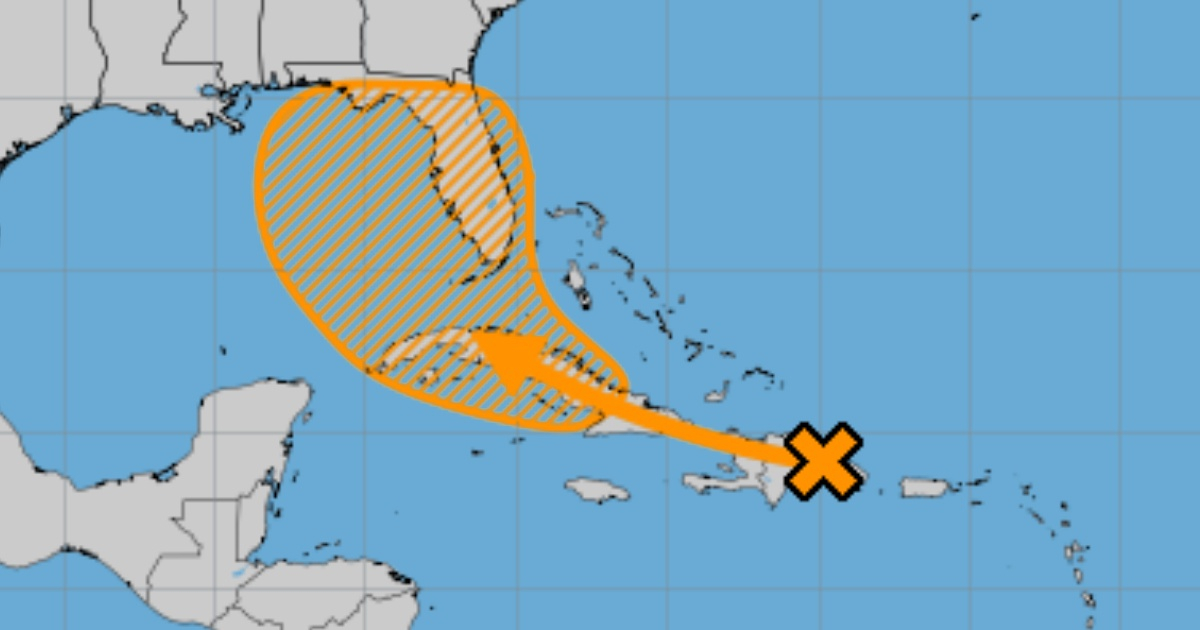The National Hurricane Center (NHC) announced this Thursday that a well-defined tropical wave is moving westward and could develop into a tropical depression in the coming days.
Currently, the system is generating a vast area of disorganized rain showers and thunderstorms over Hispaniola, Puerto Rico, the Virgin Islands, and the adjacent waters of the southwestern Atlantic and the northeastern Caribbean Sea.
The NHC noted that the system's development is expected to be slow as it moves west-northwest over parts of the Greater Antilles. The Miami-based meteorological entity anticipated that environmental conditions will become more favorable for development after the system passes the Greater Antilles.
By this weekend or early next week, a tropical depression is expected to form near the Gulf of Mexico or Florida. "Interests in the Greater Antilles, Bahamas, and Florida should continue to monitor the progress of this system. It has a low (20 percent) chance of formation within the next 48 hours and a medium (60 percent) chance within the next seven days," the NHC concluded.
Although the latest NHC bulletin suggests that the system could develop after crossing Cuba, the Institute of Meteorology has already warned of deteriorating weather conditions in the coming hours. Rain is expected in various parts of the country as a result of the tropical wave moving towards the island.
These warnings are extremely important for Cuba, which must remain highly vigilant regarding the evolution of this meteorological phenomenon.
FAQs about the Tropical Wave Approaching Cuba
Here are some frequently asked questions about the tropical wave currently moving towards Cuba and its potential development into a tropical depression.
What is the current status of the tropical wave?
The tropical wave is producing disorganized rain showers and thunderstorms over Hispaniola, Puerto Rico, the Virgin Islands, and nearby waters.
What is the likelihood of the tropical wave developing into a depression?
The National Hurricane Center has given it a 20 percent chance of developing into a depression in the next 48 hours, and a 60 percent chance within the next seven days.
Which areas should be on alert?
Residents of the Greater Antilles, Bahamas, and Florida should closely monitor the system's progress.
